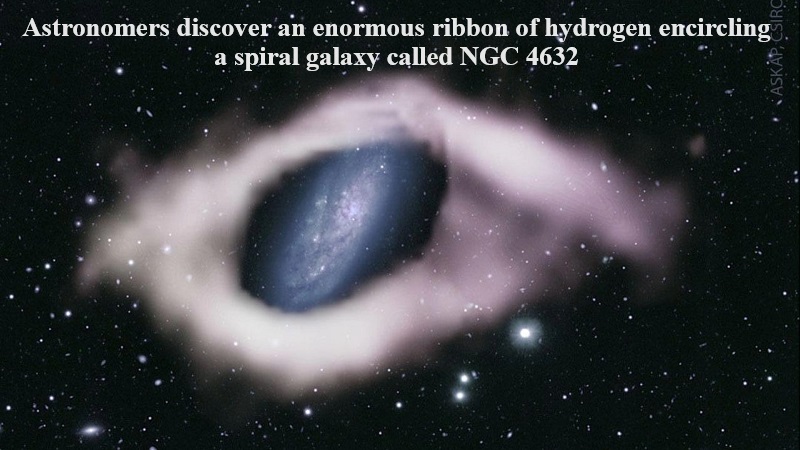
Astronomers have recently made a significant discovery involving a massive hydrogen ribbon enveloping the spiral galaxy NGC 4632, situated in the Virgo constellation. This discovery was made using the CSIRO’s Australian Square Kilometre Array Pathfinder (ASKAP) radio telescope, located on Wajarri Yamaji Country in Western Australia.
The findings have been documented in a new paper published in the Monthly Notices of the Royal Astronomical Society. This unique galaxy presents itself as if it were wrapped in a cosmic ribbon and is positioned approximately 56 million light-years away from Earth.
In 2022, astronomers initially detected an unusual gas structure surrounding the galaxy. However, the most recent images obtained by ASKAP have revealed the presence of a “ribbon” enveloping the galaxy.
The study employed the IDAVIE virtual reality software to separate the anomalous gas from the galactic gas and found that the anomalous gas constitutes approximately 50% of the total H?I content in both systems.
Astronomers suggest that they may have stumbled upon a rare “polar ring galaxy (PRG),” characterized by a ring or disc of material oriented perpendicular to the galaxy’s direction.
The study mentioned that plausible 3D kinematic models for each galaxy were created, assuming that the rings are circular and inclined at 90° to the galaxy bodies. These models indicate that the data align with the characteristics of PRGs, although they do not conclusively confirm that these galaxies are indeed PRGs.
Polar ring galaxies are among the most mysterious and captivating objects in the universe. The gaseous ring encompassing NGC 4632 is only observable from Earth at radio wavelengths.
Astrophysicist Nathan Deg from Queen’s University in Canada noted that the findings suggest that one to three percent of nearby galaxies may harbor gaseous polar rings, a prevalence much higher than what optical telescopes have previously suggested. This implies that polar ring galaxies might be more common than previously believed.
Deg emphasized that while astronomers have previously observed polar ring galaxies, NGC 4632 is the first one observed using ASKAP, hinting that there may be many more such discoveries in the future.

Post Your Comments